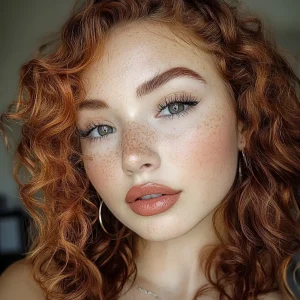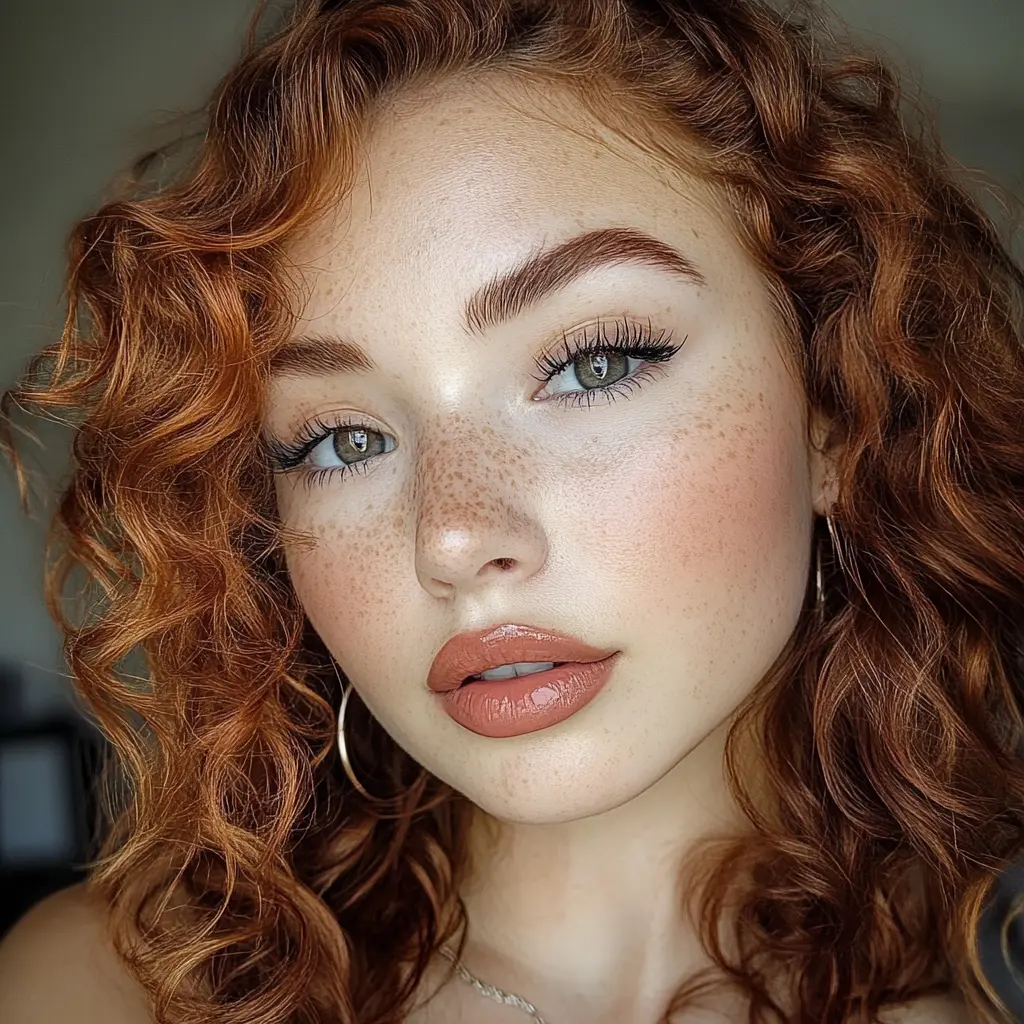Blush is like the cherry on top of your makeup look. It adds color, dimension, and a touch of radiance that makes you look fresh and vibrant. But finding the Right Blush Shade can be tricky. There are so many options, and the wrong choice can leave you looking either too flushed or completely washed out. If you’ve ever felt overwhelmed, don’t worry—you’re not alone!
In this ultimate guide, we’ll break down everything you need to know about how to choose the right blush shade for your skin tone. From understanding your skin tone and undertone to applying blush like a pro, we’ve got you covered. By the end of this article, you’ll feel confident selecting and using blush to enhance your natural beauty.
Table of contents
How to Choose the Right Blush Shade for Your Skin Tone?
Why Picking the Right Blush Shade Is So Important
Blush is more than just a pop of color on your cheeks. The right shade can:
- Brighten your complexion.
- Add warmth and balance to your makeup.
- Give you a youthful, healthy glow.
On the flip side, the wrong shade can clash with your skin tone, making you look overly made-up or even tired. Choosing the right blush shade is about complementing your natural features and creating harmony in your look.
Step 1: Understanding Skin Tones and Undertones
The key to selecting the perfect blush is knowing your skin tone (light, medium, tan, deep) and your undertone (cool, warm, or neutral). Let’s break it down.
How to Identify Your Skin Tone
- Fair or Light Skin: Your skin is pale or porcelain and burns easily in the sun.
- Medium Skin: Your skin has a golden, beige, or olive hue and tans moderately.
- Tan or Deep Skin: Your skin is richly pigmented and rarely burns.
How to Determine Your Undertone
Your undertone is the subtle hue beneath your skin’s surface, and it plays a big role in how colors look on you. Here’s how to figure it out:
- Check Your Veins: If they look blue or purple, you have a cool undertone. If they appear green, you’re warm. If it’s hard to tell, you might be neutral.
- Jewelry Test: Do you look better in silver (cool) or gold (warm)? If both look great, you’re neutral.
- White Shirt Trick: Hold a plain white shirt next to your face. If your skin looks rosy, you’re cool-toned; if it looks yellowish, you’re warm-toned.
Step 2: Matching Blush Shades to Your Skin Tone
Once you’ve figured out your skin tone and undertone, the fun begins! Selecting the right blush shade can feel like unlocking a secret formula for your most radiant look. Here’s a deeper dive into the best blush shades tailored to every skin tone and undertone, with tips and tricks to make your blush game even stronger.
Blush for Fair to Light Skin
Fair skin benefits from soft, delicate colors that mimic the natural flush you’d get from a brisk walk in chilly weather. Choosing the right shade helps avoid overpowering your complexion while enhancing your features.
- Cool Undertones: Baby pink, icy pink, and light mauve are your go-to shades.
- Warm Undertones: Soft peach, coral, and light apricot look amazing on you.
- Neutral Undertones: You have the best of both worlds! Try mixing pink and peach tones for a balanced, glowing look.
Blush for Medium Skin
Medium skin tones are naturally golden or olive, providing the perfect canvas for vibrant, richer hues. The right blush shade adds warmth and depth without appearing too stark or dull.
- Cool Undertones: Dusty rose, soft plum, and berry tones enhance your cheeks.
- Warm Undertones: Warm peach, tangerine, and golden coral shades bring out your glow.
- Neutral Undertones: Experiment with both pinks and peaches to find your perfect match.
Blush for Tan to Deep Skin
Rich, bold, and unapologetically pigmented blushes bring out the best in tan to deep skin tones. These shades add dimension and luminosity, creating a striking yet natural finish.
- Cool Undertones: Deep berry, burgundy, and wine shades look stunning.
- Warm Undertones: Terracotta, rich coral, and burnt orange tones add warmth and dimension.
- Neutral Undertones: Brick red and plum tones flatter your natural beauty.
Step 3: Choosing the Right Blush Formula
The formula of your blush plays a crucial role in how it performs, how it looks on your skin, and how long it lasts. With so many options on the market, it’s essential to choose one that suits your skin type, lifestyle, and the finish you’re aiming for. Let’s dive deeper into the pros and cons of each type of blush and when to use them.
Powder Blush
Powder blush is the most traditional and widely used formula, making it a staple in many makeup bags. It’s a versatile choice and works well for various skin types, particularly oily and combination skin.
- Best For:
- Oily skin: Powder blush helps absorb excess oil and prevents your cheeks from looking greasy throughout the day.
- Combination skin: Balances shine in oily areas while offering buildable color.
- Beginners: Powder formulas are easy to control and blend with a brush.
- Pros:
- Long-lasting: Powder blush tends to stay put longer, especially when set with a translucent powder or finishing spray.
- Easy to layer: You can start light and build intensity without it looking patchy.
- Great for controlling shine: Ideal for those prone to oily skin or living in humid climates.
- Cons:
- Can look cakey: Over-applying powder blush can leave your cheeks looking dry or overly matte, especially if you don’t blend it well.
- May emphasize texture: If you have dry patches or large pores, powder blush can make these areas more noticeable.
💡 Pro Tip: Use a fluffy blush brush for a soft, diffused finish. Sweep the blush lightly on your cheeks and blend in circular motions for a seamless look.
Cream Blush
Cream blush is known for its hydrating, dewy finish, making it an excellent choice for those with dry or mature skin. It blends seamlessly into the skin, mimicking a natural flush.
- Best For:
- Dry skin: Cream blush adds moisture and prevents your makeup from looking flaky.
- Mature skin: Its creamy texture blends into the skin without settling into fine lines or wrinkles.
- “No-makeup” looks: Perfect for achieving a natural, radiant glow.
- Pros:
- Hydrating: Cream blush often contains nourishing ingredients that keep your skin moisturized.
- Natural-looking: It melts into the skin, creating a realistic flush of color.
- Easy to blend: You can use your fingers, a sponge, or a brush to apply it.
- Cons:
- Requires touch-ups: Cream formulas aren’t as long-lasting as powders and may fade over the day, especially in hot weather.
- Less suited for oily skin: On oily or combination skin, cream blush can slide around or add unwanted shine.
💡 Pro Tip: For a long-lasting effect, layer a matching powder blush over your cream blush. This creates a vibrant, multidimensional look that lasts all day.
Liquid or Gel Blush
Liquid and gel blushes have gained popularity for their lightweight, buildable nature. These formulas are great for achieving a sheer, fresh look with a dewy finish.
- Best For:
- Fresh, youthful glow: Ideal for anyone who loves the look of barely-there makeup.
- Summer makeup: Lightweight and breathable, making it perfect for warm weather.
- Customizable intensity: Works well for those who like to control the color payoff.
- Pros:
- Lightweight: Feels like a second skin and won’t clog pores.
- Buildable: A single drop creates a sheer flush, while layering intensifies the color.
- Dewy finish: Gives your cheeks a natural, luminous glow.
- Cons:
- Tricky application: Liquid and gel formulas require a bit of practice to blend evenly without leaving streaks.
- Quick drying: Some liquid blushes dry fast, so you need to work quickly when applying.
💡 Pro Tip: Use a damp makeup sponge to blend liquid blush for an airbrushed effect. Start with a small amount and build up gradually.
Stick Blush
Stick blushes are the ultimate in convenience. Compact and easy to apply, they’re perfect for busy mornings or touch-ups on the go.
- Best For:
- On-the-go application: Throw it in your bag for quick touch-ups throughout the day.
- Precise placement: The stick format allows for targeted application, making it beginner-friendly.
- Travelers: Stick blushes are compact and travel-friendly, with no risk of spills.
- Pros:
- Portable: Small, sturdy, and doesn’t require additional tools.
- Precise: Great for controlling exactly where you apply color.
- Multi-functional: Many stick blushes double as lip tints, making them a two-in-one product.
- Cons:
- Blending can be tricky: If not blended properly, stick blush can leave visible lines or patches.
- Limited finish options: Stick blushes are often creamy, which might not suit oily skin types.
💡 Pro Tip: Apply the stick directly to your cheeks, then use your fingers or a brush to blend the edges. For a more diffused look, swipe the stick onto a makeup sponge first, then pat it onto your skin.
Step 4: Applying Blush Like a Pro
Applying blush isn’t just about slapping some color on your cheeks—it’s an art that can transform your entire look. The placement of blush can define your cheekbones, soften your features, or even balance the proportions of your face. The key is tailoring your technique to your unique face shape. Here’s how to master it.
Oval Faces
Oval faces are considered well-balanced, so the goal is to enhance the natural contours without altering the shape.
- How to apply: Smile gently to locate the apples of your cheeks. Apply the blush to the apples and blend it outward and slightly upward toward your temples. This technique accentuates your cheekbones while maintaining harmony in your features.
Round Faces
Round faces have softer edges and fuller cheeks, so the goal is to add definition and create the illusion of length.
- How to apply: Start slightly above the apples of your cheeks—closer to the outer edge of your face. Sweep the blush diagonally upward toward your temples to elongate your features. Avoid placing blush directly on the apples, as it can make your face appear even rounder.
Square Faces
Square faces have a strong jawline and angular features, so the goal is to soften these edges for a balanced, feminine look.
- How to apply: Concentrate the blush on the center of your cheeks, blending it in circular motions. This softens the angles of your face and draws attention to your cheekbones rather than your jawline.
Heart-Shaped Faces
Heart-shaped faces are wider at the forehead and taper to a narrower chin, so the goal is to balance the upper and lower halves of the face.
- How to apply: Apply blush to the apples of your cheeks, blending it outward and upward toward your hairline. This balances the wider forehead and helps soften the tapering effect at the chin.
Oblong Faces
Oblong faces are longer and narrower, so the goal is to add width and bring attention to the center of the face.
- How to apply: Apply blush in a horizontal motion across the apples of your cheeks, focusing closer to the center of your face. Avoid sweeping upward, as it can make your face look longer.
Diamond Faces
Diamond faces are widest at the cheekbones, so the goal is to soften their prominence and bring balance to the forehead and jawline.
- How to apply: Focus blush on the apples of your cheeks, blending outward toward the ears. Avoid applying blush too high or too far out, as this can overemphasize the cheekbones.
Step 5: Setting Your Blush for All-Day Wear
Nobody wants their blush to fade halfway through the day. Here’s how to make it last:
- Start with a primer to create a smooth base.
- Set your blush with a translucent powder or finishing spray.
- Carry your blush for touch-ups if needed, especially with cream or liquid formulas.
Final Thoughts
Finding the perfect blush shade doesn’t have to be complicated. By understanding your skin tone, undertone, and personal preferences, you can choose a blush that enhances your natural beauty and boosts your confidence. Remember, makeup is all about experimenting and having fun—so don’t be afraid to try something new!
For more beauty tips, check out our other guides like How to Find the Right Foundation Shade and Finding the 6 Perfect Lipstick Shade for Fair Skin Tones. If you’re looking for deeper insights into the world of beauty, visit trusted resources like Sephora’s Blush Buying Guide for even more inspiration.


